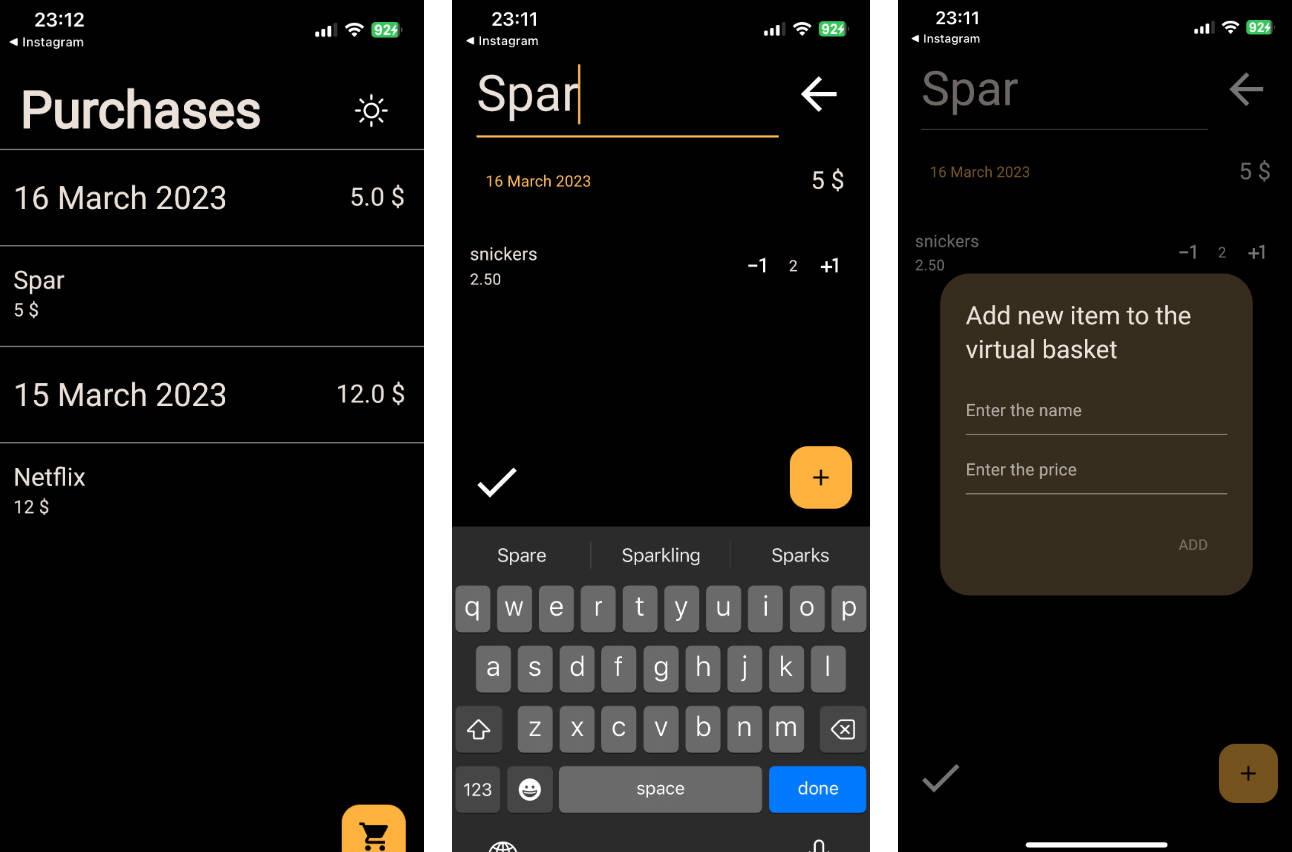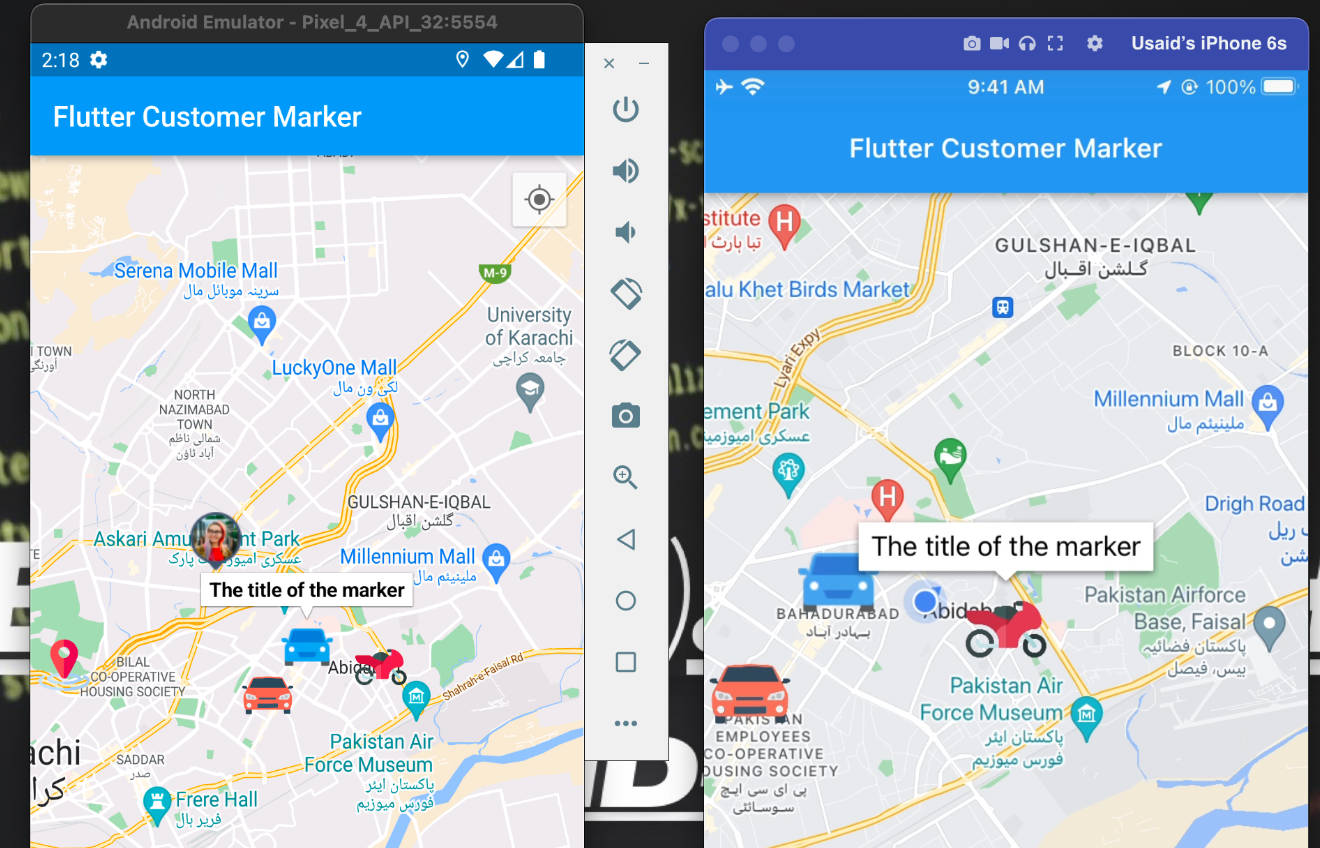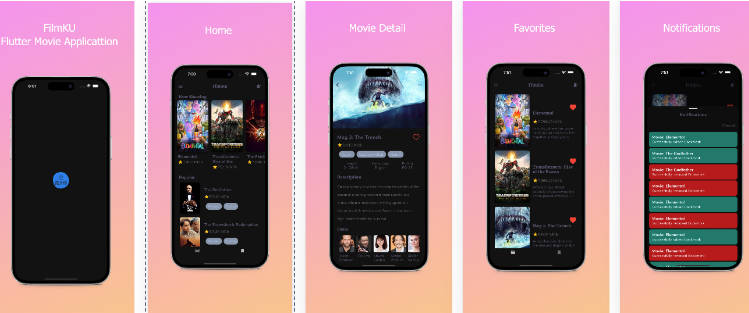Flutter Clean Architecture with Riverpod
A Flutter app that uses the “Dummy Json” api.
Features
- Login
- Fetch products
- Search products
- Pagination
What is used in this project?
-
Riverpod Used for state management
-
Freezed Code generation
-
Dartz Functional Programming
Either<Left,Right> -
Auto Route Navigation package that uses code generation to simplify route setup
-
Dio Http client for dart. Supports interceptors and global configurations
-
Shared Preferences Persistent storage for simple data
-
Flutter and Dart And obviously flutter and dart 😅
Project Description
Data
The data layer is the outermost layer of the application and is responsible for communicating with the server-side or a local database and data management logic. It also contains repository implementations.
a. Data Source
Describes the process of acquiring and updating the data. Consist of remote and local Data Sources. Remote Data Source will perform HTTP requests on the API. At the same time, local Data sources will cache or persist data.
b. Repository
The bridge between the Data layer and the Domain layer. Actual implementations of the repositories in the Domain layer. Repositories are responsible for coordinating data from the different Data Sources.
Domain
The domain layer is responsible for all the business logic. It is written purely in Dart without flutter elements because the domain should only be concerned with the business logic of the application, not with the implementation details.
a. Providers
Describes the logic processing required for the application. Communicates directly with the repositories.
b. Repositories
Abstract classes that define the expected functionality of outer layers.
Presentation
The presentation layer is the most framework-dependent layer. It is responsible for all the UI and handling the events in the UI. It does not contain any business logic.
a. Widget (Screens/Views)
Widgets notify the events and listen to the states emitted from the StateNotifierProvider.
b. Providers
Describes the logic processing required for the presentation.
Communicates directly with the Providers from the domain layer.
Project Description
main.dartfile has services initialization code and wraps the rootMyAppwith aProviderScopemain/app.darthas the rootMaterialAppand initializesAppRouterto handle the route throughout the application.servicesabstract app-level services with their implementations.- The
sharedfolder contains code shared across featuresthemecontains general styles (colors, themes & text styles)modelcontains all the Data models needed in the application.httpis implemented with Dio.storageis implemented with SharedPreferences.- Service locator pattern and Riverpod are used to abstract services when used in other layers.
For example:
final storageServiceProvider = Provider((ref) {
return SharedPrefsService();
});
// Usage:
// ref.watch(storageServiceProvider);
- The
featuresfolder: the repository pattern is used to decouple logic required to access data sources from the domain layer. For example, theDashboardRepositoryabstracts and centralizes the various functionality required to fetch theProductfrom the remote.
abstract class DashboardRepository {
Future<Either<AppException, PaginatedResponse>> fetchProducts({required int skip});
Future<Either<AppException, PaginatedResponse>> searchProducts({required int skip, required String query});
}
The repository implementation with the DashboardDatasource:
class DashboardRepositoryImpl extends DashboardRepository {
final DashboardDatasource dashboardDatasource;
DashboardRepositoryImpl(this.dashboardDatasource);
@override
Future<Either<AppException, PaginatedResponse>> fetchProducts(
{required int skip}) {
return dashboardDatasource.fetchPaginatedProducts(skip: skip);
}
@override
Future<Either<AppException, PaginatedResponse>> searchProducts(
{required int skip, required String query}) {
return dashboardDatasource.searchPaginatedProducts(
skip: skip, query: query);
}
}
Using Riverpod Provider to access this implementation:
final dashboardRepositoryProvider = Provider<DashboardRepository>((ref) {
final datasource = ref.watch(dashboardDatasourceProvider(networkService));
return DashboardRepositoryImpl(datasource);
});
And finally accessing the repository implementation from the Presentation layer using a Riverpod StateNotifierProvider:
final dashboardNotifierProvider =
StateNotifierProvider<DashboardNotifier, DashboardState>((ref) {
final repository = ref.watch(dashboardRepositoryProvider);
return DashboardNotifier(repository)..fetchProducts();
});
Notice how the abstract NetworkService is accessed from the repository implementation and then the abstract DashboardRepository is accessed from the DashboardNotifier and how each of these layers acheive separation and scalability by providing the ability to switch implementation and make changes and/or test each layer seaparately.
Testing
The test folder mirrors the lib folder in addition to some test utilities.
state_notifier_test is used to test the StateNotifier and mock Notifier.
mocktail is used to mock dependecies.
1. Testing the simple Provider provider:
test('dashboardDatasourceProvider is a DashboardDatasource', () {
dashboardDataSource = providerContainer.read
(dashboardDatasourceProvider(networkService));
expect(
dashboardDataSource,
isA<DashboardDatasource>(),
);
});
And here is how we can test it separately from Flutter:
void main() {
late DashboardDatasource dashboardDatasource;
late DashboardRepository dashboardRepository;
setUpAll(() {
dashboardDatasource = MockRemoteDatasource();
dashboardRepository = DashboardRepositoryImpl(dashboardDatasource);
});
test(
'Should return AppException on failure',
() async {
// arrange
when(() => dashboardDatasource.searchPaginatedProducts(skip: any(named: 'skip'), query: any(named: 'query')))
.thenAnswer(
(_) async => Left(ktestAppException),
);
// assert
final response = await dashboardRepository.searchProducts(skip: 1, query: '');
// act
expect(response.isLeft(), true);
},
);
}
class MockRemoteDatasource extends Mock implements DashboardRemoteDatasource {}
To explore test coverage
run bash gencov.sh
Folder Structure
lib
├── configs
│ └── app_configs.dart
│
├── main
│ ├── app.dart
│ ├── app_env.dart
│ ├── main_dev.dart
│ ├── main_staging.dart
│ └── observers.dart
│
├── configs
│ └── app_configs.dart
├── routes
│ ├── app_route.dart
│ └── app_route.gr.dart
│
├── services
│ └── user_cache_service
│ ├── data
│ │ ├── datasource
│ │ │ └── user_local_datasource.dart
│ │ └── repositories
│ │ └── user_repository_impl.dart
│ ├── domain
│ │ ├── providers
│ │ │ └── user_cache_provider.dart
│ │ └── repositories
│ │ └── user_cache_repository.dart
│ └── presentation
│
├── shared
│ ├── data
│ │ ├── local
│ │ │ ├── shared_prefs_storage_service.dart
│ │ │ └── storage_service.dart
│ │ └── remote
│ │ ├── dio_network_service.dart
│ │ ├── network_service.dart
│ │ └── remote.dart
│ ├── domain
│ │ ├── models
│ │ │ ├── product
│ │ │ │ ├── product_model.dart
│ │ │ │ ├── product_model.freezed.dart
│ │ │ │ └── product_model.g.dart
│ │ │ ├── user
│ │ │ │ └── user_model.dart
│ │ │ ├── models.dart
│ │ │ ├── paginated_response.dart
│ │ │ ├── parse_response.dart
│ │ │ └── response.dart
│ │ └── providers
│ │ ├── dio_network_service_provider.dart
│ │ └── sharedpreferences_storage_service_provider.dart
│ ├── exceptions
│ │ └── http_exception.dart
│ ├── mixins
│ │ └── exception_handler_mixin.dart
│ ├── theme
│ │ ├── app_colors.dart
│ │ ├── app_theme.dart
│ │ ├── test_styles.dart
│ │ └── text_theme.dart
│ ├── widgets
│ │ ├── app_error.dart
│ │ └── app_loading.dart
│ └── globals.dart
│
├── features
│ ├── authentication
│ │ ├── data
│ │ │ ├── datasource
│ │ │ │ ├── auth_local_data_source.dart
│ │ │ │ └── auth_remote_data_source.dart
│ │ │ └── repositories
│ │ │ └── atuhentication_repository_impl.dart
│ │ ├── domain
│ │ │ ├── providers
│ │ │ │ └── login_provider.dart
│ │ │ └── repositories
│ │ │ └── auth_repository.dart
│ │ └── presentation
│ │ ├── providers
│ │ │ ├── state
│ │ │ │ ├── auth_notifier.dart
│ │ │ │ ├── auth_state.dart
│ │ │ │ └── auth_state.freezed.dart
│ │ │ └── auth_providers.dart
│ │ ├── screens
│ │ │ └── login_screen.dart
│ │ └── widgets
│ │ ├── auth_field.dart
│ │ └── button.dart
│ ├── dashboard
....
Run this project
Clone this repository
git clone https://github.com/Uuttssaavv/flutter-clean-architecture-riverpod
Go to the project directory
cd flutter-clean-architecture-riverpod
Get all the packages
flutter pub get
Run the build runner command
flutter pub run build_runner build
Run the project
flutter run or simply press F5 key if you are using VSCode
About Me
Do visit my portfolio site or connect with me on linkedin




